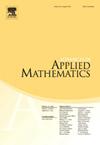The symmetric strong circuit elimination property
IF 1.3
3区 数学
Q3 MATHEMATICS, APPLIED
引用次数: 0
Abstract
If and are circuits in a matroid M with in and e in , then M has a circuit such that . This strong circuit elimination axiom is inherently asymmetric. A matroid M has the symmetric strong circuit elimination property (SSCE) if, when the above conditions hold and , there is a circuit with . We prove that a connected matroid has this property if and only if it has no two skew circuits. We also characterize such matroids in terms of forbidden series minors, and we give a new matroid axiom system that is built around a modification of SSCE.
对称强电路消除特性
若C1和C2是矩阵M中的回路,其中e1在C1−C2中,e在C1∩C2中,则M存在一个回路C3,使得e∈C3蔓生(C1∪C2)−e。这个强电路消除公理本质上是不对称的。当满足上述条件,且e2∈C2−C1时,存在一个C3′≥{e1,e2}的 C3′≥(C1∪C2)−e的回路,则矩阵M具有对称强回路消去性(SSCE)。我们证明了一个连通的矩阵具有这个性质当且仅当它没有两个歪斜的电路。我们还用禁止级数的小调来描述这类拟阵,并给出了一个围绕SSCE的修正而建立的新的拟阵公理系统。
本文章由计算机程序翻译,如有差异,请以英文原文为准。
求助全文
约1分钟内获得全文
求助全文
来源期刊

Advances in Applied Mathematics
数学-应用数学
CiteScore
2.00
自引率
9.10%
发文量
88
审稿时长
85 days
期刊介绍:
Interdisciplinary in its coverage, Advances in Applied Mathematics is dedicated to the publication of original and survey articles on rigorous methods and results in applied mathematics. The journal features articles on discrete mathematics, discrete probability theory, theoretical statistics, mathematical biology and bioinformatics, applied commutative algebra and algebraic geometry, convexity theory, experimental mathematics, theoretical computer science, and other areas.
Emphasizing papers that represent a substantial mathematical advance in their field, the journal is an excellent source of current information for mathematicians, computer scientists, applied mathematicians, physicists, statisticians, and biologists. Over the past ten years, Advances in Applied Mathematics has published research papers written by many of the foremost mathematicians of our time.
 求助内容:
求助内容: 应助结果提醒方式:
应助结果提醒方式:


